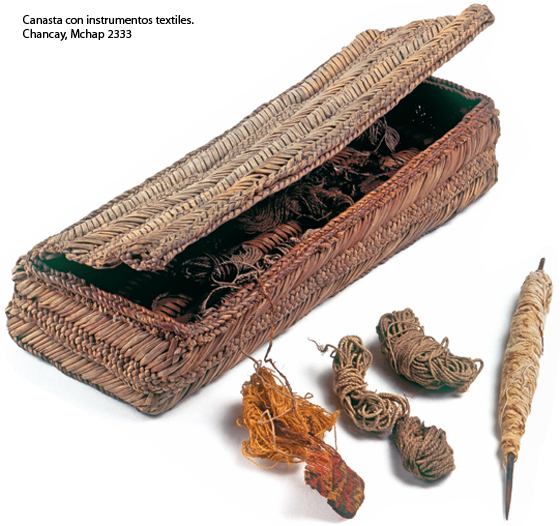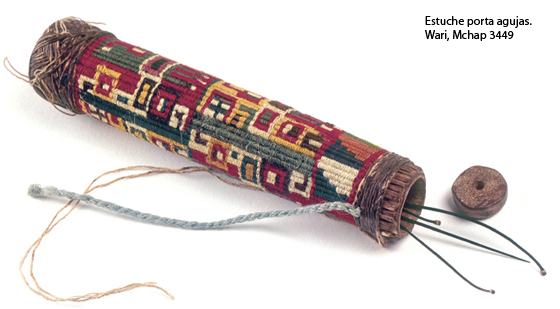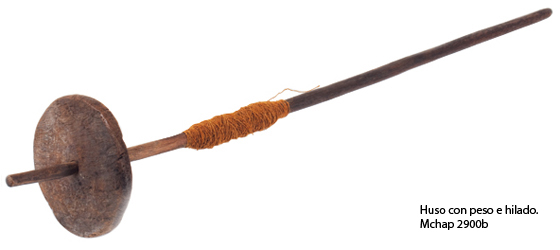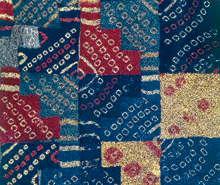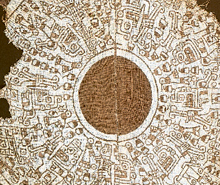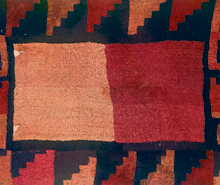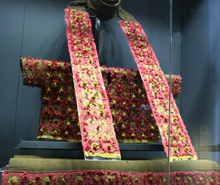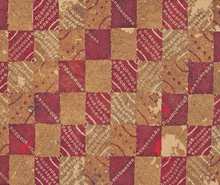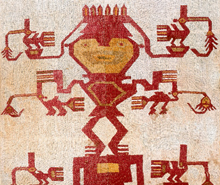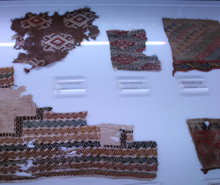Textile materials and instruments
In the early stages, Andean textiles were manufactured using the fibers of plants such as reeds and rushes. The main fibers used in developing these textiles were cotton—domesticated on the coast around six thousand years ago—and llama, alpaca and vicuna camelid hair from the highlands. Other fibers used included human hair and the hair of vizcachas, chinchillas and bats.
The achievements of the Andean yarn-dyeing tradition were the result of a long period of experimentation during which textile artists acquired a repertoire of colors. To the different natural colors of the fibers themselves they added colors obtained from different plants, as well as colors of animal origin (Concholepas mollusk and cochinilla, p.e.) and from minerals such as iron oxide and copper.
The instruments they used for spinning were simple and efficient: a wooden fork to keep the fiber organized and a spindle composed of a straight stick and a weight and that varied in size according to length, thickness and quantity of fiber to be spun.
Three types of looms came into use: The waist or belt loom was used for narrow items; the horizontal loom, which had stakes driven into the ground; and the vertical loom, was used for weaving larger textiles. Items were generally
woven in the desired form on the loom itself to avoid the need for cutting the fabric and notable care was taken with finishing techniques and to avoid the use of knots.




































